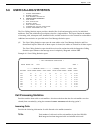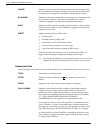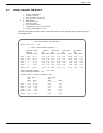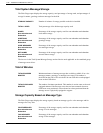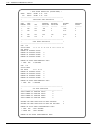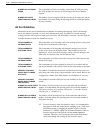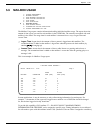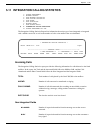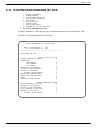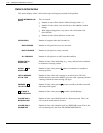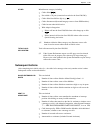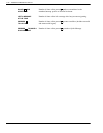
Reports 5-33
Octel 200/300 S.4.1PB60019−01
5.9 MAILBOX USAGE
1. SYSTEM PERFORMANCE.
2. NETWORK TRAFFIC.
3. USER MESSAGE STATISTICS.
4. USER CALLING STATISTICS.
5. DISK USAGE.
6. PORT STATISTICS.
' 7. MAILBOX USAGE.
8. USER STATUS DETAIL.
9. INTEGRATION CALLING STATISTICS.
10 SYSTEM PERFORMANCE BY COS.
The Mailbox Usage report contains information detailing individual mailbox usage. The report shows the
amount of time a port was used for each mailbox in the USER Table. The extension associated with each
mailbox is also listed. The usage time for each mailbox is measured in two ways: Logon Time and
Access Time.
- Logon Time. Logon time is the amount of time a person is logged onto their mailbox. The
accumulated time is added to that mailbox’s logon time when the person exits their mailbox (by
entering
9 9
or hanging up).
- Access Time. Access time is the amount of time a caller listens to a greeting and/or leaves a
message. The accumulated time is added to that mailbox’s access time after the greeting plays or a
message is left.
This is an example of a Mailbox Usage report:
* MAILBOX USAGE SUMMARY *
MM/DD HH:MM P.M. YYYY Page 1
LOGON ACCESS
MAILBOX EXTENSION TIME (MIN) TIME (MIN)
468 468 22 2
469 469 24 6
470 470 4 0
471 47114 12
472 472 11 9
473 0 0
474 474 102
475 475 6 3
In some applications, it may be necessary to only collect timing information for certain ports. For
example — the amount of time a person is logged onto a mailbox over a WATS line should be charged
for, but the time logged on locally should not.
To provide this capability, COS Attribute 55 — DO NOT COLLECT MAILBOX TIMING
INFORMATION FOR THIS PORT, can be assigned to specific ports. Timing information is not collected
for calls made to ports with this attribute in their COS. (Attribute 55 has no effect if assigned to a mailbox.)



